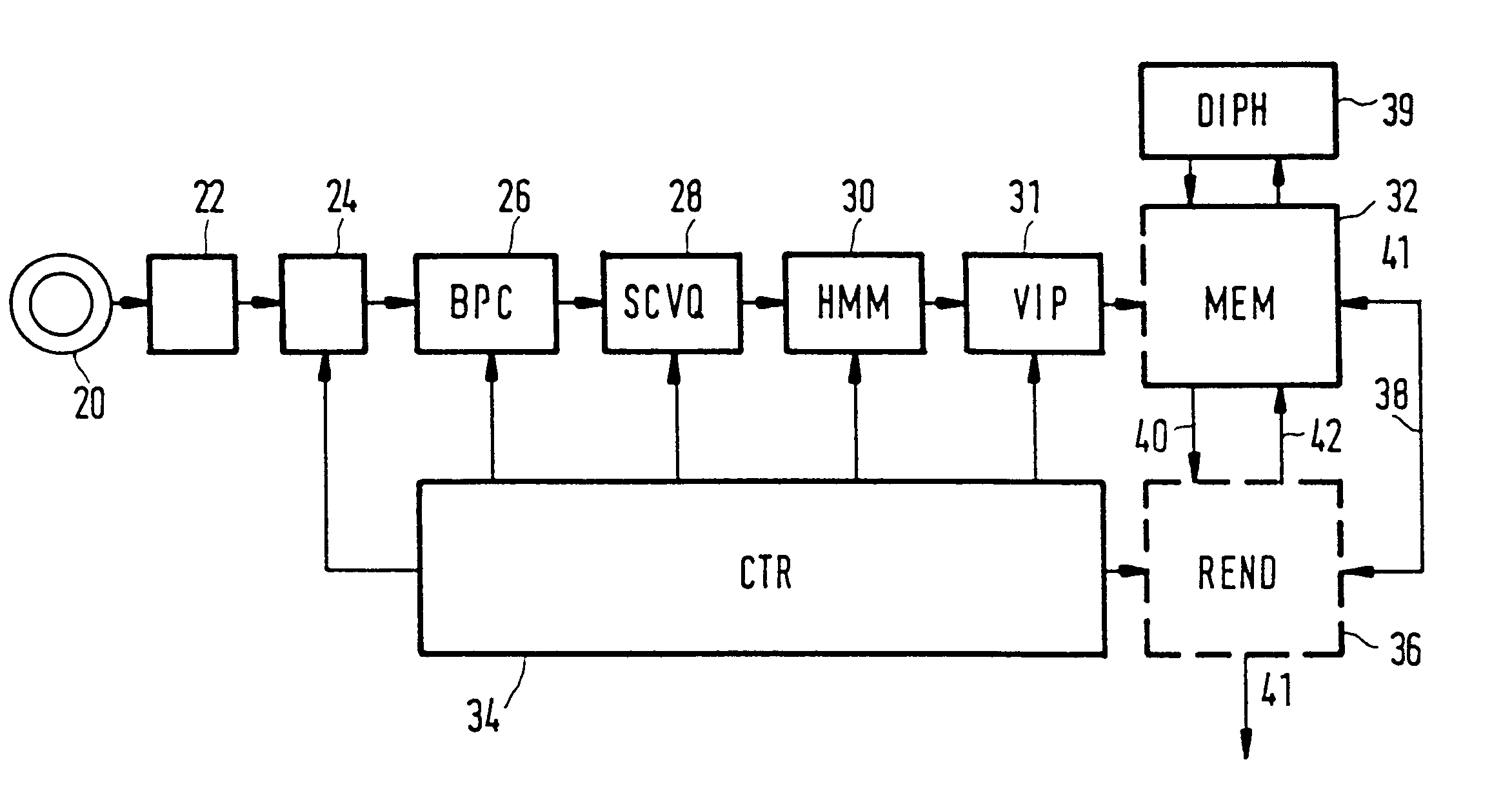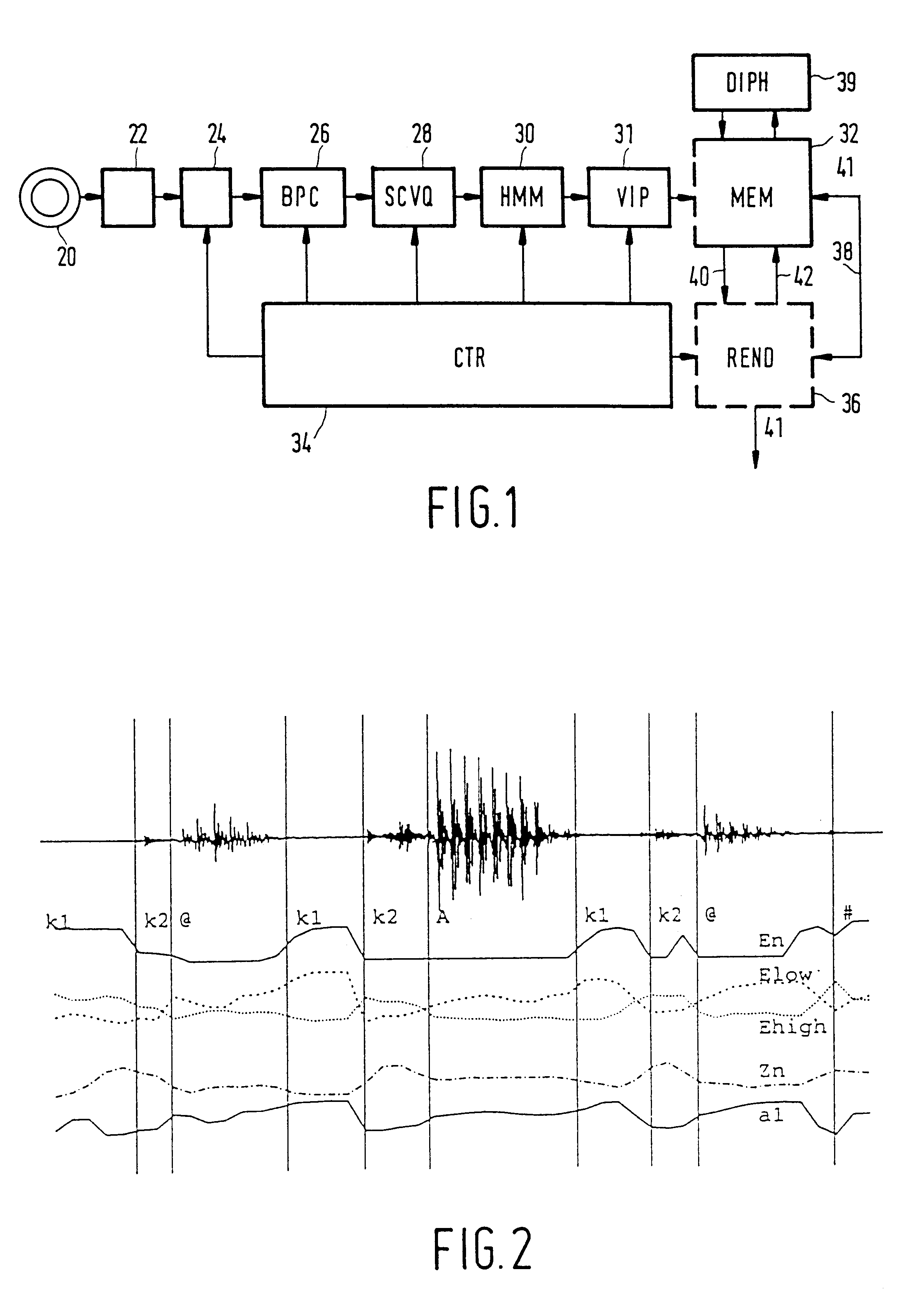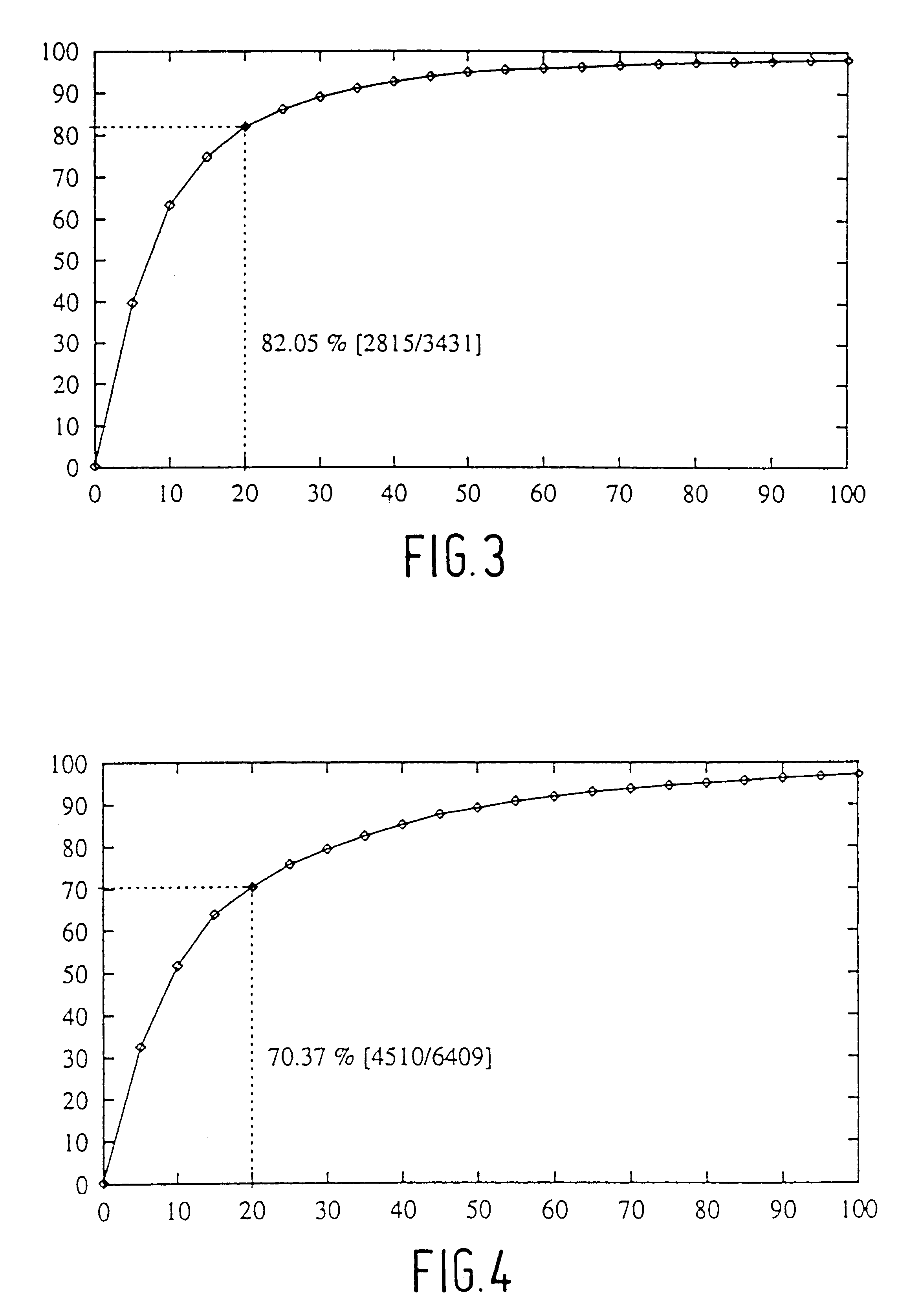Method and apparatus for automatic speech segmentation into phoneme-like units for use in speech processing applications, and based on segmentation into broad phonetic classes, sequence-constrained vector quantization and hidden-markov-models
a speech processing and automatic segmentation technology, applied in the field of automatic segmentation of speech for use in speech processing applications, can solve the problems of insufficient quality of known methods, insufficient boundaries found by methods, and inability to meet the needs of speech processing, etc., and achieve the effect of straightforward and inexpensiv
- Summary
- Abstract
- Description
- Claims
- Application Information
AI Technical Summary
Benefits of technology
Problems solved by technology
Method used
Image
Examples
Embodiment Construction
The present invention intends to cut each utterance of a database into a sequence of non-overlapping contiguous phoneme segments and to form a one-to-one correspondence between these segments and a sequence of phonetic class labels provided by the phonetic transcription. Speech can be described appropriately as a sequence of acoustic vectors which each characterize the speech over a uniform time frame of typically 10-20 ms with between-frame shifts of 2.5-10 ms. The p-dimensional acoustic vector of any frame t is o(t)=[o.sub.l (t) . . . o.sub.p (t)]', the accent indicating vector transposition and a complete sequence of T frames then is represented by O(1,T)=o(1), . . . o(T). In the embodiment of the present invention, for the BPC segmentation p=5, for the sequence-constrained vector quantization p=12, and for the Hidden-Markov-Modelling, p=51. A broad phonetic class element or phoneme-like unit spanned by a segment I can be represented by a prototypical vector or centroid denoted b...
PUM
 Login to View More
Login to View More Abstract
Description
Claims
Application Information
 Login to View More
Login to View More - R&D
- Intellectual Property
- Life Sciences
- Materials
- Tech Scout
- Unparalleled Data Quality
- Higher Quality Content
- 60% Fewer Hallucinations
Browse by: Latest US Patents, China's latest patents, Technical Efficacy Thesaurus, Application Domain, Technology Topic, Popular Technical Reports.
© 2025 PatSnap. All rights reserved.Legal|Privacy policy|Modern Slavery Act Transparency Statement|Sitemap|About US| Contact US: help@patsnap.com



